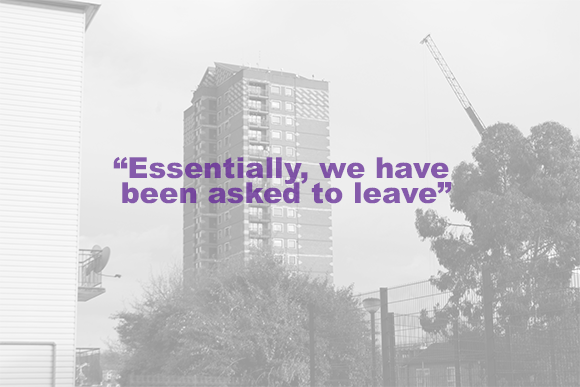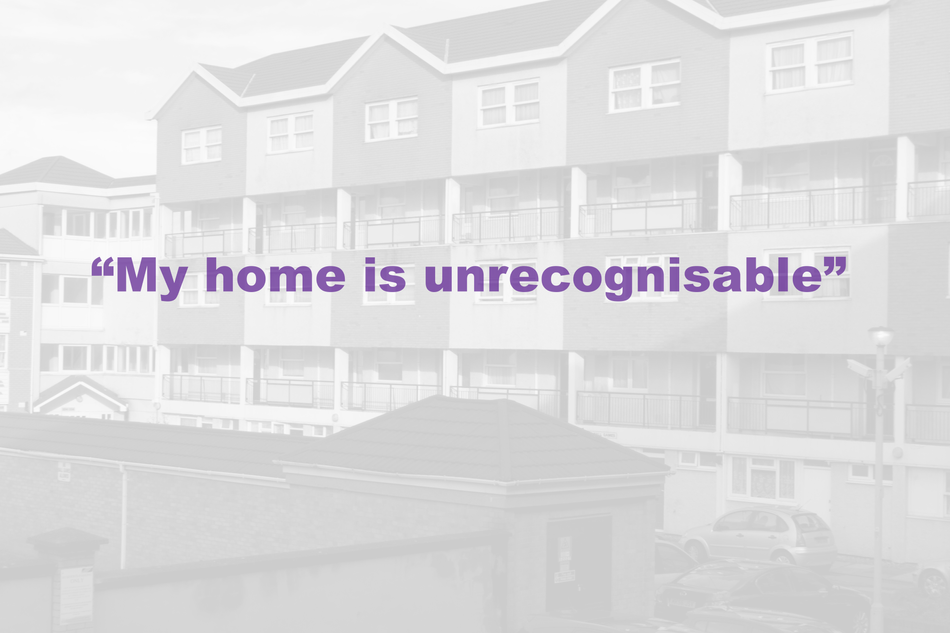I’ve lived in Walthamstow for over 12 years. We settled in immediately: our neighbours were exceptionally welcoming and the community felt like a large family.
After spending many years moving around London, my mother, father, younger sister and I had finally found a real home. I grew up here, spending every day after school playing in our local park with the other children. We always looked out for each other.
Walthamstow was my home, my community and my culture.
That is, until late 2015, when a multimillion-pound regeneration project was proposed and approved, changing my life forever.
This project—proposed by Waltham Forest Council in partnership with developers Countryside—promised to improve the lives of tenants.
Yet somewhere along the turmoil of gentrification that hit me and my community in Marlowe Road, that promise was compromised.
In reality, our well-being came second to the deep pockets of private developers. My home—an area so rich in culture and life, a place I’ve built memories with for over a decade—will be demolished, and there’s nothing I can do to stop it.

Walthamstow has undergone many changes in the past four years, creating an unrecognisable environment for long-standing local communities. Commercial spaces have developed drastically, with a new cinema in the town square, new restaurants and new clothing stores—all to benefit a new crowd arriving in the area.
These new spaces will certainly improve the local economy—and therefore prove a winner for the council, who set this as one of the main goals for their regeneration programmes. However, these spaces cannot replace those which our community has relied on for so many years.
The controversial decision to move Wood Street Library, for example, will affect a place that young people have always loved. I, like many others in Walthamstow, used this library year after year, studying for GCSE’s and then A-Levels, accessing reading material and simply enjoying our local library. The Soul Project (TSP) youth space has already been closed down. This was a place which was safe for all young people; somewhere to protect, teach and assist the younger community.
The regeneration programme was advertised and glorified as a community project, essentially a way in which the children’s areas would be improved, anti-social behaviour reduced, and the state of the flats transformed. In 2015, the council put out a statement identifying their ambitions for the project and Walthamstow more generally.
“The Council has ambitious targets for regeneration,” they explained—one that will make “a major improvement to the local environment.”
“As part of this regeneration programme, the Council is looking to facilitate and enable the delivery of 10,000 new homes of all tenures, with particular emphasis on providing affordable homes for local households.”
Unfortunately, these 10,000 new homes would not be built with my community in mind. Instead, they were for a different target audience—one that would be a greater fit for the new fancy bars, restaurants and multiplying commercial spaces which alienated the underprivileged members of our community. The council document calls them “new economically active people.”

The beginning stages of the regeneration programme were the most difficult; coming to terms with the demolition of your home is not an easy process.
My family were worried—as were many other families, some of whom have lived in this area for over 20 years. I and many neighbours gathered, hoping that we could afford to live within these fancy new build flats.
In an attempt to reassure an angry and confused community, our worries were addressed at weekly meetings with the council. However, these meetings suggested to me and many others that this was a fundamentally disorganised project.
The Waltham Forest Government website states that “all council tenants affected by the regeneration have been given right to return.” (A reduction on council-owned properties mean only a third of the new estate will be social housing.)
It is outrageous that this has been proposed as an ‘option’. My family and I sat for hours on Friday evenings deciding which home we could potentially afford, only to find that the flats which will replace ours are simply not an option due to increased property prices.
The average salary within the Marlowe Road community can vary between £18,000 to £20,000 per year. This most certainly does not align with the prices of new homes within this area: a one-bedroom flat begins at £250,000, while a 3-bedroom flat with Countryside developers begins at £600,000.
Essentially, we have been asked to leave Marlowe Road: not explicitly, but with the knowledge that gentrification will push us out, one way or another. As I continue my hunt for a new affordable home every week, I cannot help but wonder: how can this “community project” aid my community?
It is now 2018, three years since the announcement of Walthamstow’s regeneration program, and my home is unrecognisable.
Our story is a common one: gentrification has been impacting underdeveloped areas all across London, forcing out underprivileged communities, ripping them apart one memorable location, flat, community space or library at a time.
There will be a time when the tenants at Marlowe Road will look back at the area we once lived in and not even feel nostalgic because of the vast transformation of Walthamstow.
This piece originally stated that the council regeneration plans set out an ambition to build 12,000 new homes. This has been corrected to 10,000, and a minor phrasing changed to clarify this is across the borough.













